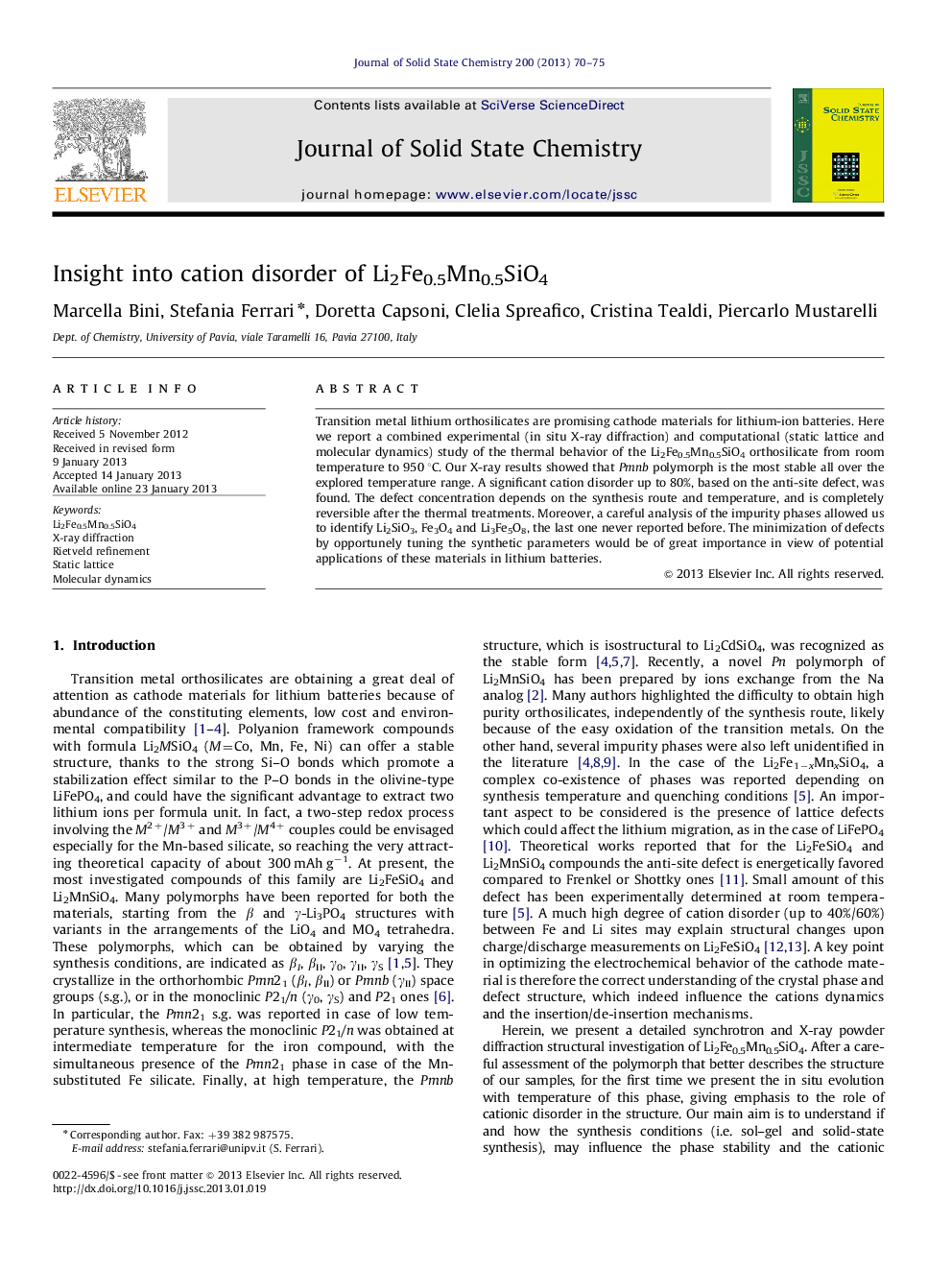| Article ID | Journal | Published Year | Pages | File Type |
|---|---|---|---|---|
| 1331191 | Journal of Solid State Chemistry | 2013 | 6 Pages |
Transition metal lithium orthosilicates are promising cathode materials for lithium-ion batteries. Here we report a combined experimental (in situ X-ray diffraction) and computational (static lattice and molecular dynamics) study of the thermal behavior of the Li2Fe0.5Mn0.5SiO4 orthosilicate from room temperature to 950 °C. Our X-ray results showed that Pmnb polymorph is the most stable all over the explored temperature range. A significant cation disorder up to 80%, based on the anti-site defect, was found. The defect concentration depends on the synthesis route and temperature, and is completely reversible after the thermal treatments. Moreover, a careful analysis of the impurity phases allowed us to identify Li2SiO3, Fe3O4 and Li3Fe5O8, the last one never reported before. The minimization of defects by opportunely tuning the synthetic parameters would be of great importance in view of potential applications of these materials in lithium batteries.
Graphical abstractA combined experimental in situ X-ray diffraction and computational study of the thermal behavior of the Li2Fe0.5Mn0.5SiO4 is reported herein. The anti-site defect does justify the diffraction patterns changes with temperature.Figure optionsDownload full-size imageDownload as PowerPoint slideHighlights► Study of the thermal behavior of Li2Fe0.5Mn0.5SiO4. ► The anti-site defect does justify the diffraction patterns changes with temperature. ► The Pmnb polymorph is stable in the investigated temperaturerange.
